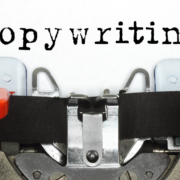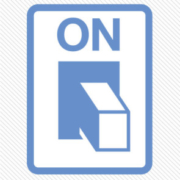The great thing about being creative is that you can break the rules if you like. Do your own thing. The only trouble is, before you break the rules you have to learn what they are.
Table of Contents
For the newbie copywriter, here are a few basics about writing ads.
Learn them now, break them later!
1. Words & pictures
Which comes first: the picture or the words? Should you come up with a killer headline and then a pic to fit or the other way round? Truth is, it doesn’t matter one little bit as long as what you do come up with fits the brief. Weirder still, if you’re working with an art director, many’s the time that he or she will come up with the words and you with the visual idea. Whatever works, works! One thing’s for sure, though. The headline and visual should complement each other not duplicate each other. So if the headline says something like “Using this product is a piece of cake” for goodness sake don’t just show a piece of cake. There has to be some tension between the two or some kind of word play so that there’s a surprise or pay off for the reader.
2. Where to start
Any journalist will tell you that a good article should begin with all the ‘Ws’: Who, What, Where, When, Why. (And perhaps an ‘H’: How). They’re things that are likely to be included in a press ad but not quite in the same way. You need to get the benefit of the product across as quickly as possible. Answer the reader’s question: “What’s in it for me?”. Another good start is to kind of ‘touch base’ with the reader by showing you understand him or her. So you could begin with a question like “Have you ever…?” and follow up with the solution – your product.
A clearer parallel with journalistic writing is in the structure of an ad. You can’t count on anyone reading every word you write so pack the top end with all the most important information and spread the other supporting facts through the rest of the copy. Think of an inverted pyramid. Start with the most important things and end with the least important.
3. How to end
Having said that, the very end is as important as the beginning. What do you want the reader to do? Should they call a number for more information? Should they rush down to the shops right away? You’ve got to give them a ‘Call to action’, an instruction telling them what they should do next. In well-crafted copy this call to action will reference the headline or first line of copy so as to give a neat sense of closure and completeness to the whole ad.
4. Control yourself
As copywriters we all love writing words. But there’s no bit of copy that couldn’t be improved by editing. So when you’ve written your first draft and are congratulating yourself, “Hmm, that sounds pretty good”, go through it again and try to cut it back by 20 or 30%. 50% even. You’ll find that it’s always possible and it always improves the copy no end making it tighter, punchier and easier to read. And, as you’re writing, you should always try to be as concise as possible. Practise word economy so, if you can get your point across in five words, don’t use ten. Same with sentences. Keep them short and easy-to-digest.
Also, use brief paragraphs comprised of around three to five sentences or approximately 50 to 75 words. The eye tends to get lost while reading long blocks of text and psychologically, they can seem overwhelming. It’s important to break up the copy into easily digestible “bites” of information.
5. Watch your tone
In terms of voice, the general rule is to use second person singular, “you”. We’re trying to establish a link with our reader so it’s good to address him or her directly. Too much “We” can come across as being self-obsessed in a “Look at us, aren’t we good” kind of a way. No one likes a smartarse. Referring to your client as “They” or “It” or “the company” could be okay in some circumstances but it tends to put a little bit of distance between you, the writer, and the thing you’re talking about. Then again, if you want to come across as authoritative and serious that may be just what you want. As ever, no rights or wrongs here but it’s something you have to think about before you start.
Most ads are written in a conversational tone of voice. Imagine you were selling this product to someone face to face. What would you say then? Try and introduce that same tone (and even the same structure of argument) into your copy. The type of product or service you’re offering will have a bearing on this too. You’d adopt a more formal tone of voice to advertise, say, a law firm than when selling bubble gum. Try and get in the head of your target audience and talk their language.
Please let us know what you think of this topic by leaving a short (or long!) comment below. And sign up now for our regular newsletter at the bottom of the page.









Useful advice. Thanks.